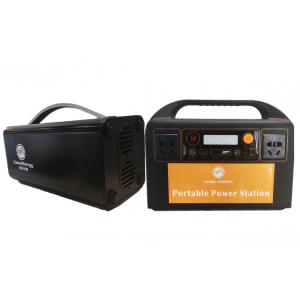

Add to Cart
Lithium-ion PES1000 Portable Power Storage For Trips and
Emergencies
Portable power storage battery provides the electricity whenever
you need it. With it, you don't need to worry about the power
outage or going out for camping trip. With 1024Wh capacity, the
power storage station can power the electric appliances such as the
lights, mobilephone, laptop, cooker, mini refrigerator, audio etc.,
and is compact enough to take or store easily.
Product Features
High Capacity
Max output power is 1500W, available for high-power electrical appliances
Vibration Resistant
Noninflammable material for battery shell, robust resistance to
wear and shock
Temperature and Heat Control
Intelligent temperature control and effectively heat dissipation
Safe
Over charging/discharging protection, effectively guarantee the
safety of the battery
Lifetime Extension
Optimized design for the cell to extend the lifetime of the battery
Product Model
| Total Capacity | 1024Wh |
| Cell Capacity | 4000mAh |
| Total Battery Cells | 80pcs |
| Inverter (Simulated/Pure Sine Wave) | Pure sine wave |
| Inverter(Max Output Power) | 1500W |
| Inverter(Voltage) | 120V 60Hz |
| Output Port(AC) | *4 |
| Output Port(USB-A) | 3*(5V/2.4A) |
| Output Port(USB-C) | 3*PD 60W |
| Output Port (12V Car Port) | 9V-12.6V 10A |
| Input Port(DC 8mm) | 12-30V 10A |
| Input Port(Solar Charge) | 13-30V/30A 400W |
Applications
Live-streaming, Outdoor exploration, Photography interviews, Mobile
office, Outdoor camping, RV travel, Engineering construction, Tool
power supply, Medical treatment, Fire rescue, etc.
About Camel
Founded in 1980, Camel Group Co., Ltd.(Stock No: SH601311) is
specialized in the R&D, production and sales of lead-acid
batteries, with the production of EV lithium-ion battery and used
battery recycling as the supplement. Camel is the largest and
leading car battery manufacturer in Asia.
Currently, Camel has four major brands, which are CAMEL, HUAZHONG,
SWAN, DF. With over 400 types of products covering automotive
starter battery, start-stop battery, lithium-ion battery, traction
battery, etc. Camel batteries are widely used in cars, trucks,
agricultural vehicles, golf carts, electric vehicles and other
applications.
The core competitiveness of Camel Group stems from continuous
independent innovation, clear development strategy and efficient
execution, which are all based on having an enterprising and
innovative management and technical team. To ensure the
technological leadership in the industry, Camel has continuously
increased R&D investment and introduced the world's leading
automatic production lines, and advanced R&D and testing
devices. The professional R&D institute under the company is
recognized as state-level enterprise technology center. Camel also
has academician expert workstation and state-level laboratory. As a
high-tech enterprise supported by the state, Camel has entered the
field of new energy vehicle prospectively, committed to green
energy manufacturing and recycling, and opening a low-carbon life
for mankind.
FAQ
1. Why is the battery voltage abnormal?
A: After charging, the voltage of each single cell should be around
2.1 V (may be affected by electrolyte density). If the voltage is
low during primary usage, check if battery is fully charged or if
electrolyte density is too high or too low.
If battery shows comparatively higher voltage during charging,
along with numerous bubbles and voltage drops fast during
discharge, this may indicate plates sulfation. Fully discharge the
battery with low current and then charge the battery with low
current (0.1C20), repeat the discharge and charge steps several
times. The effect of this method may be affected by the sulfation
degree.
2. What is the effect of abnormal electrolyte density and indicator
color?
A: During battery charging and discharging processes, electrolyte
density should vary from 1.070 to 1.290g/cm3. Density increases
during charging and decreases when discharging.
a. If density is too high, it will cause plate sulfation and
accelerate grid corrosion; while if density is too low, it will
affect discharge capacity.
b. Under normal charging conditions, if the density does not
increase significantly or even remain unchanged, there is a
possibility of plate’s sulfation, which may need countermeasures to
eliminate sulfation.
c. After the battery is charged, if the density decreases
significantly during the resting period, it indicates the sever
battery self-discharge, which may be caused by too much impurities
in electrolyte. If electrolyte shows abnormal color or smell, or
even shows turbidity, it indicates that the electrolyte is impure
and impurities has got into the battery.
d. If electrolyte shows the color of metal ions, there is a
possibility of contamination.
